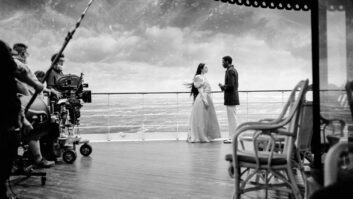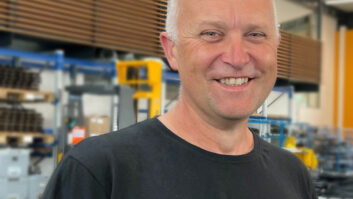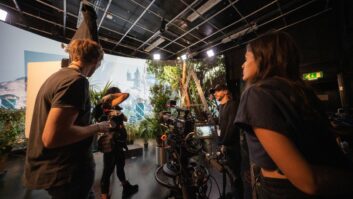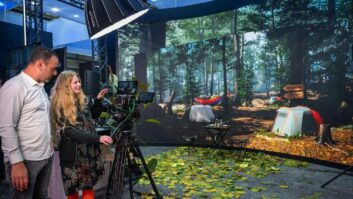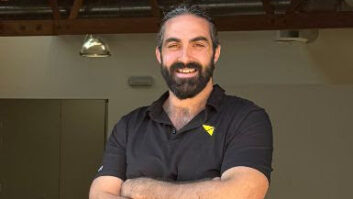AV Stumpfl’s award-winning media server platform, PIXERA, has supplied the video backbone for Mandela, a musical about the life of Nelson Mandela which recently finished its run at London’s Young Vic theatre.
Produced in partnership with the Mandela family, and with music and lyrics by Shaun and Greg Dean Borowsky, Mandela tells the extraordinary story of a man who changed the course of modern history. A musical infused with the rhythms of South Africa, Mandela focuses primarily on the period between 1960 and 1990, from Mandela’s involvement with the African National Congress to his arrest and imprisonment on Robben Island and his eventual release.
Directed by Schele Williams and featuring a book by Laiona Michelle, Mandela ran at the Young Vic until 4 February 2023.
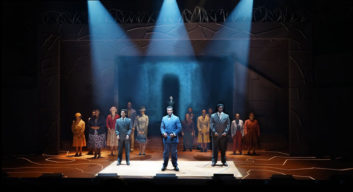 Mandela’s projection and video designer, Akhila Krishnan, said that her approach to the show was “very much tied to the overall approach of the production itself; the visual language is one of abstraction using colour and texture to convey mood, emotion and, sometimes, location. The textures are quite elemental – they evoke and suggest fire, water, stone and sky.”
Mandela’s projection and video designer, Akhila Krishnan, said that her approach to the show was “very much tied to the overall approach of the production itself; the visual language is one of abstraction using colour and texture to convey mood, emotion and, sometimes, location. The textures are quite elemental – they evoke and suggest fire, water, stone and sky.”
To help achieve this naturalistic design in the theatre setting of the Young Vic, Krishnan turned to AV Stumpfl’s PIXERA media server system, which allows for powerful, user-friendly real-time media processing, compositing and management, as well as the support of the AV Stumpfl team, who were on hand to make sure everything ran smoothly, despite a complex video set-up.
Mandela video programmer Stanley Orwin-Fraser explained that the production used two PIXERA server licences (one for the main hardware system and one for the back-up), with the two servers running on Gigabyte Z590 AORUS MASTER, Intel Core i9 and NVIDIA A4500 hardware. “We took our triggers from the EOS lighting desk, using the fixture module EOStimeline,” he added. “This is very useful and I found it intuitive in its simplicity and set-up.”
“The way in which video needs to be programmed and cued for theatre and musicals is very different from the way in which it is done for projection mapping or rock’n’roll,” continued Krishnan.
“To add to this complexity, the content was triggered by the lighting desk on this show, and part of how we worked through building the show file for video was to be able to hand it over to the on-site team for them to manage during the run. This was a big creative challenge and our on-site team worked very closely with the PIXERA team to be able to arrive at the finished show file for the production.”
Orwin-Fraser also praises the support provided by the PIXERA team, who were “always available for a call. Benni [Mueller] and Oliver [Kilian] would even create and modify node protocols so they would fit our needs.”
“The PIXERA team were regularly in touch with us and the level of help, advice and service they provided was exemplary,” added Krishnan, who said that to her knowledge Mandela marked the first time PIXERA has been used on a project of this scale in theatre in the UK.
Outlining the further benefits the PIXERA platform brought to Mandela, projection system designer Matthew ‘Mogzi’ Bromley-Morgans remarked: “Working with PIXERA allowed us to bring in the costing process for the project on budget while also allowing us to work with timeline-based programming for video, which is imperative while working on a live musical on this scale. The PIXERA team were a huge support and were always at hand to help us troubleshoot and find ways to integrate the media server to this format of live performance. It was great to be able to have an ongoing conversation with them through the process.”
